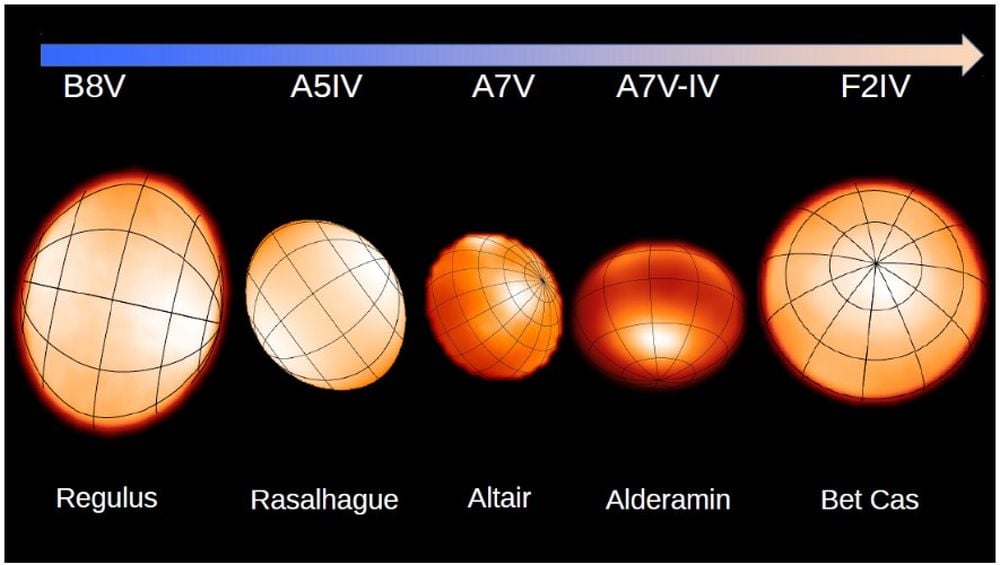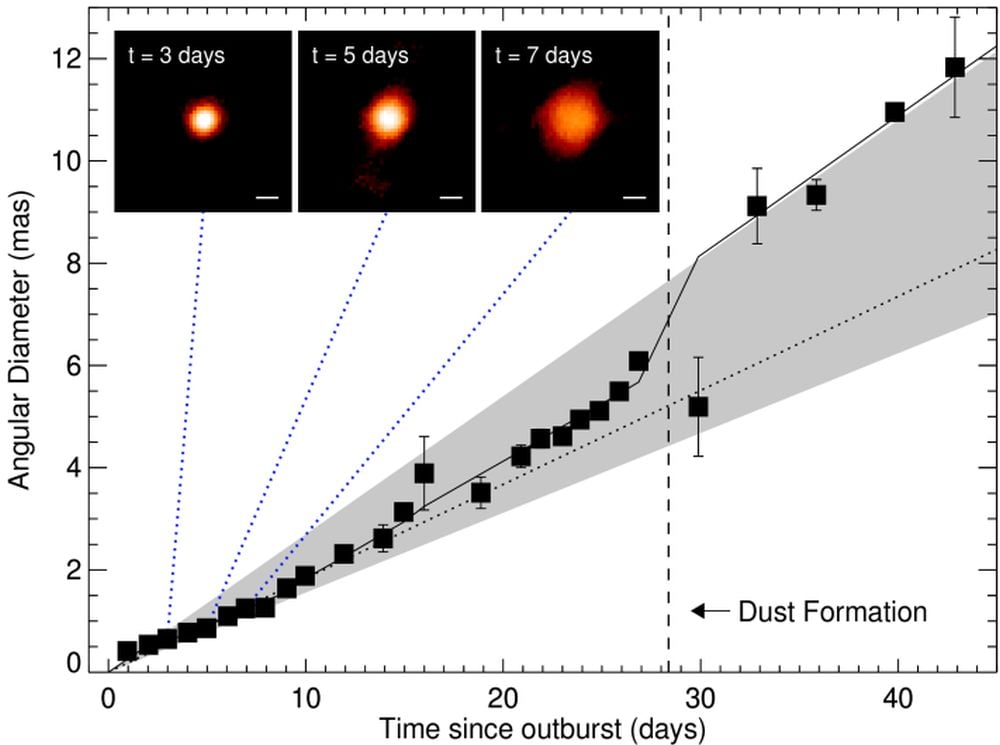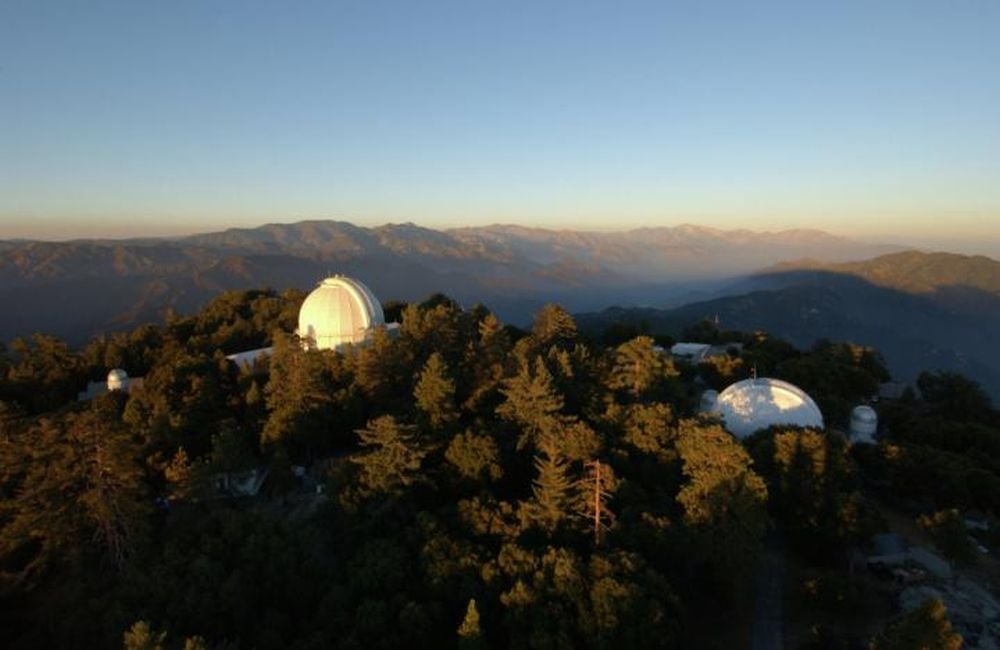Georgia State University’s Center for High Angular Resolution Astronomy (CHARA), a six-telescope interferometer, excels at studying stars. It’s been observing them for 20 years and has contributed to 276 published papers. The University is celebrating its achievements so far, and underscoring how Georgia State evolved from an institution not known for research to one that’s now considered a large research university.
GSU scientist Hal McAlister was the lead author for one of the first papers published based on CHARA data, and is now a Regents’ Professor Emeritus of Astronomy at GSU. That paper was focused on the star Regulus, part of the Leo constellation and one of the brightest stars in the sky. “These first results from the CHARA Array provide the first interferometric measurement of gravity darkening in a rapidly rotating star and represent the first detection of gravity darkening in a star that is not a member of an eclipsing binary system,” that paper state.
Since then, CHARA has contributed to astrophysics in many ways. It’s measured the sizes of stars across a wide range of masses and evolutionary stages, and when combined with data from Gaia and Hipparcos, have let scientists study stellar evolution models more deeply and thoroughly. It’s revealed the oblate shapes of rapidly-rotating stars and imaged features on their surface. It’s resolved circumstellar disks around Be stars, made of material ejected from the stars themselves.
“It’s been a joy to witness CHARA grow to even greater heights thanks to the dedication of so many over the years,” McAlister said.
Theo ten Brummelaar was the lead author of the second paper published based on CHARA. It explained how the array worked and outlined how GSU planned to upgrade the array in the future. ten Brummelaar was director of the CHARA Array until his retirement in 2022.
“At the time, Georgia State University wasn’t the large research university it is now, and very few people thought we’d get the funding, let alone be successful at building the CHARA Array,” ten Brummelaar said of the early days of the project. “We were a very small team of people with little history of designing and building large instruments like this. Nevertheless, we had a great deal of support, both financial and moral, from the university, and now CHARA and GSU are leaders in the field of ground-based optical interferometry and the astrophysics it enables.”
In our current age of exoplanet discovery, the nature of the stars they orbit is critically important to understanding the planets themselves. “Without understanding stars, we’ll never understand planets,” ten Brummelaar said in an interview.
This figure shows 693 stars. It’s an HR diagram of stars, many of which host exoplanets, that was created using interferometry data from CHARA, as well as data from other sources. It’s a great example of the contribution CHARA has made in its first 20 years. Image Credit: Ashley Elliott 2024.
“We knew in 2005 that the array would open a new window on the universe,” said current CHARA Director Douglas Gies. “But it is astonishing how much the array has revealed to us about the stars and their lives.”
CHARA also excels at measuring rapidly-rotating stars. They push the boundaries of stellar physics, and anything that pushes Nature’s boundaries can tell scientists a lot. Rapid rotators are known for gravity darkening.
 These are some of the rapidly-rotating stars studied by CHARA. The rapid rotation deforms the stars into oblate shapes. That means the equators are further from the cores, and are cooler as a result. This is called gravity darkening, since the equators have less gravity than the poles. Image Credit: CHARA Array/John Monnier
These are some of the rapidly-rotating stars studied by CHARA. The rapid rotation deforms the stars into oblate shapes. That means the equators are further from the cores, and are cooler as a result. This is called gravity darkening, since the equators have less gravity than the poles. Image Credit: CHARA Array/John Monnier
CHARA has also contributed to our understanding of Nova explosions. These occur in tight binaries where one star is a white dwarf. The white dwarf draws hydrogen away from its companion, where it builds up as a layer on the outside of the white dwarf. Eventually, the hydrogen explodes as a Nova, which is bright at first then slowly fades over months. CHARA has imaged the expanding fireballs that form immediately after the explosion. CHARA observations produced the first images of a Nova during the early fireball stage and revealed how the structure of the ejected material evolves as the gas expands and cools.
 This research figure shows how the CHARA array was able to measure the expansion of a Nova fireball from Nova Delphinus 2013 (V339 Del). CHARA was able to show that there’s more complexity in these events than thought. By measuring the expansion rate accurately, CHARA showed that a bipolar structure forms as early as the second day and indicates that the fireball is clumpy. Image Credit: Schaefer et al. 2014, Nature, 515, 243
This research figure shows how the CHARA array was able to measure the expansion of a Nova fireball from Nova Delphinus 2013 (V339 Del). CHARA was able to show that there’s more complexity in these events than thought. By measuring the expansion rate accurately, CHARA showed that a bipolar structure forms as early as the second day and indicates that the fireball is clumpy. Image Credit: Schaefer et al. 2014, Nature, 515, 243
CHARA observing time is in high demand, and in 2024, the National Science Foundation granted CHARA $3.5 million to allow more researchers to access the array.
“The National Science Foundation award is the key to open the array to the best ideas about new avenues for research,” said Chara Director Gies. “There will be remarkable new results coming soon about stars, planets and distant active galaxies.”
CHARA has seen several upgrades in recent years. New instruments and cameras have increased its power considerably. In 2024, a seventh mobile telescope was added to the array. This is a key upgrade, since the other six are in fixed positions, and will help the array image the surfaces of even larger stars. It will increase the array’s baseline from 330 meters to 550 meters. The seventh telescope is also a test case for further future development of the array.
“CHARA runs the best optical and infrared interferometer in the world and delivers the highest resolution observations possible at these wavelengths,” said Nigel Sharp, a program director in NSF’s Division of Astronomical Sciences. “It is exciting to see that such observations can be delivered routinely and that CHARA’s sought-after capabilities are now available to non-experts in the research community.”
